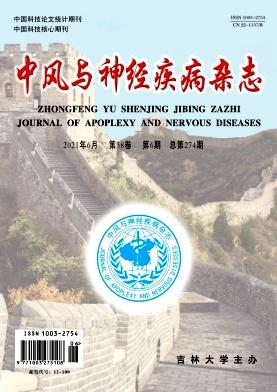Microsurgical anatomy of the ophthalmic artery
引用次数: 1
Abstract
Objective To provide some microsurgical anatomy for operations related to the ophthalmic artery. Methods We examined twenty adult cadaveric heads under ×5 to 25 magnification. The microsurgical anatomy of the origin,course and branches of the ophthalmic artery was studied. Results 90% ophthalmic artery originated from the supraclinoid segment of the internal carotid artery (ICA),most of them arose from the medial third of the superior surface of the ICA. 5% ophthalmic artery originated from the cavernous segment of ICA. 5% ophthalmic artery originated from the middle meningeal artery. The ophthalmic artery was divided into three segments (intracranial,intracanal and intraorbital segment). According to the relation to the optic nerve,the intraorbital course of the ophthalmic artery was divided into three parts. The main branches of ophthalmic artery included central retinal artery,posterior ciliary artery,lacrimal artery,posterior and anterior ethmoidal arteries. Conclusion The ophthalmic artery can be protected in operation if we are familiar with the microsurgical anatomy of the origin,course and branches of the ophthalmic artery.眼动脉的显微外科解剖
目的为眼动脉相关手术提供显微外科解剖学依据。方法在×5 ~ 25倍放大镜下对20具成人尸体头部进行解剖。对眼动脉的起源、走行和分支进行了显微外科解剖研究。结果90%的眼动脉起源于颈内动脉(ICA)的斜上段,其中大部分起源于颈内动脉上表面的内三分之一。5%眼动脉起源于颈内动脉海绵状段。5%眼动脉起源于脑膜中动脉。将眼动脉分为颅内、肛管和眶内三段。根据与视神经的关系,将眼动脉眶内走行分为三部分。眼动脉的主要分支包括视网膜中央动脉、睫状体后动脉、泪动脉、筛后动脉和筛前动脉。结论熟悉眼动脉的起源、走行及分支的显微外科解剖,可在手术中保护眼动脉。
本文章由计算机程序翻译,如有差异,请以英文原文为准。
求助全文
约1分钟内获得全文
求助全文
来源期刊
自引率
0.00%
发文量
10238
期刊介绍:
"Journal of Apoplexy and Nervous Diseases" is a statistical source journal for Chinese scientific and technological papers and a core journal of Chinese science and technology under the supervision of the Ministry of Education of the People's Republic of China and sponsored by Jilin University. The published content mainly focuses on cerebrovascular diseases, and also reports on other diseases in neurology and neurosurgery, as well as neurological complications in various clinical disciplines. It aims to reflect the major progress in clinical and scientific research work in neurology at home and abroad, and to serve the majority of clinicians and Scientific researchers, promoting academic exchanges at home and abroad.
This journal has columns such as guidelines and expert consensus, reviews, expert lectures, treatises and experience summaries, reviews, short articles and case reports, and teaching gardens. Each issue has key columns, covering cerebrovascular disease, epilepsy, dementia and cognitive impairment, Parkinson's disease, movement disorders, neuroimmunity, neuroinfection, neurological critical illness, sleep disorders, spinal cord disease, neuromuscular disease, headache, and dizziness. , neurological rehabilitation, neurological rare diseases and other clinical practice research and basic experimental research.

 求助内容:
求助内容: 应助结果提醒方式:
应助结果提醒方式:


